Le Château de Chantilly
A description of a visit to the Château de Chantilly just north of Paris, including a fabulous art collection and the fanciest stables this blogger has ever seen.
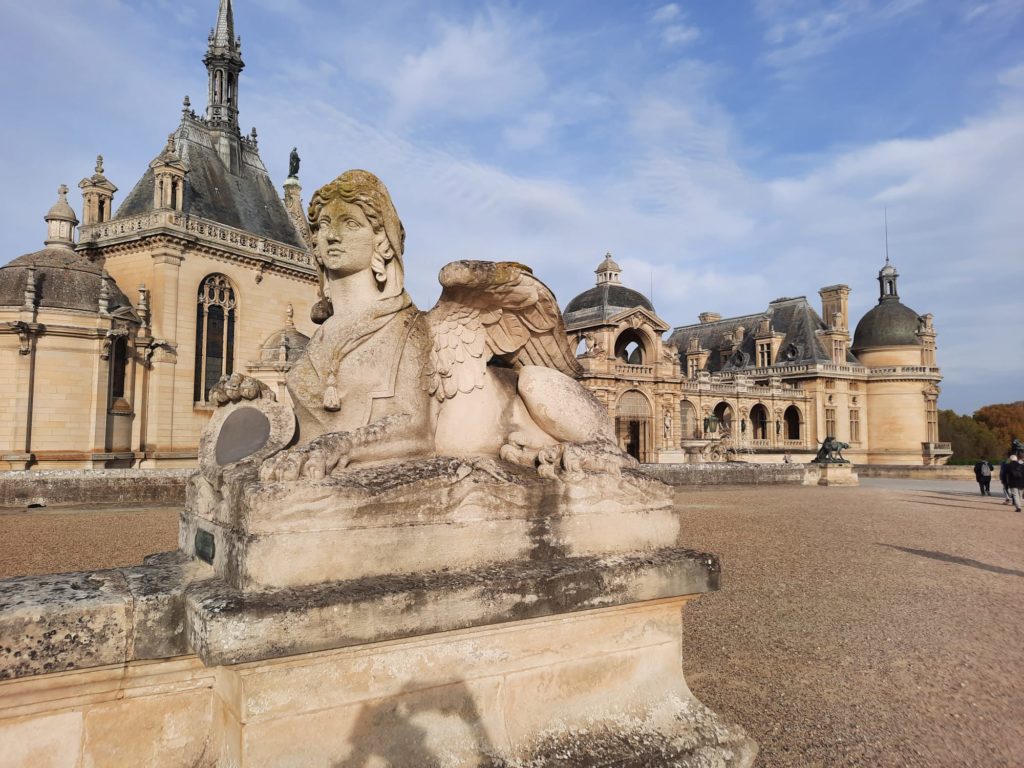
Le Château de Chantilly
I’ve really enjoyed visiting a lot of stately homes in the UK. Particularly since the pandemic and the upswing in staycations. They can often be a bit of a pain to get to, which is why I hadn’t gone earlier, but are generally a nice, pleasant day out. The same goes for some of the fantastic châteaux and palaces around Paris. I lived in Paris for a while many years ago but aside from a visit to Versailles, only ever got as far as looking up the directions on Google Maps and deciding to go somewhere simpler. But on a recent trip to Paris I chose to start remedying this oversight with a visit to the Château de Chantilly.
Why this one? Well there are a few options close to Paris. As well as Versailles there is the Palais de Fontainebleau, for instance. But I settled on the Château de Chantilly for two reasons. Firstly, it has a world-renowned art collection, housed in the Musée Condé inside the château. I was very keen to see this. Secondly, there is an interesting London connection. Despite appearances, the Château de Chantilly is mostly a 19th Century rebuild. The original château was sold for building materials after the French Revolution. Henri d’Orléans, duc d’Aumale, who rebuilt it, lived for many years in exile in Twickenham. Orleans House Gallery, which we have visited, is the last remnant of his house there.
So all in all a nice daytrip for a couple of Londoners on a long weekend in Paris. Before I dive into my description, a couple of practical pointers. Firstly, you can currently get a combined train and entry ticket for €25 from the SNCF. However, trains are not particularly frequent and the walk from the station isn’t insignificant so plan ahead. Secondly, if the weather is suitable the restaurant in the Hameau (hamlet) is delightful. There can be a wait or you can book ahead.

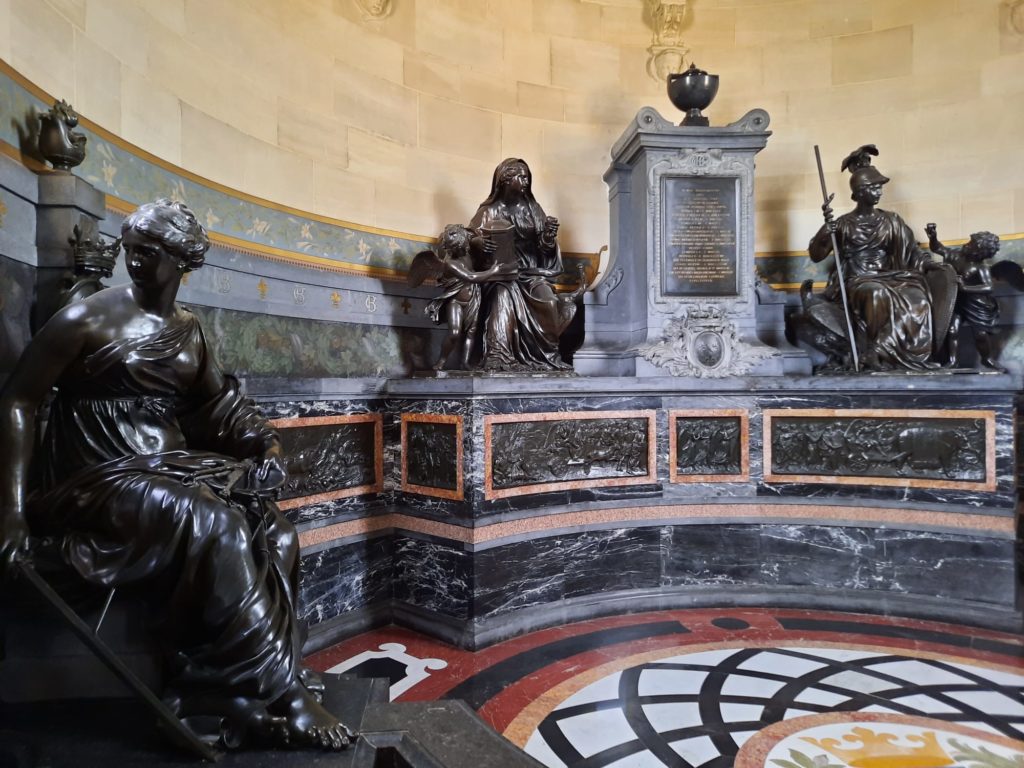
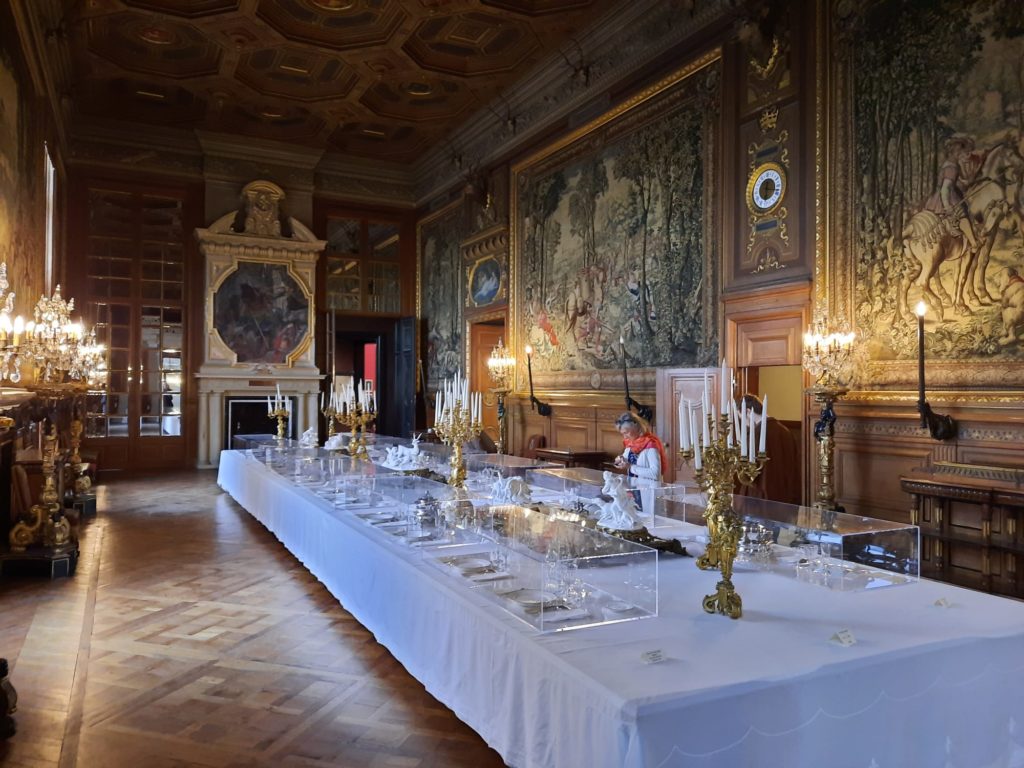

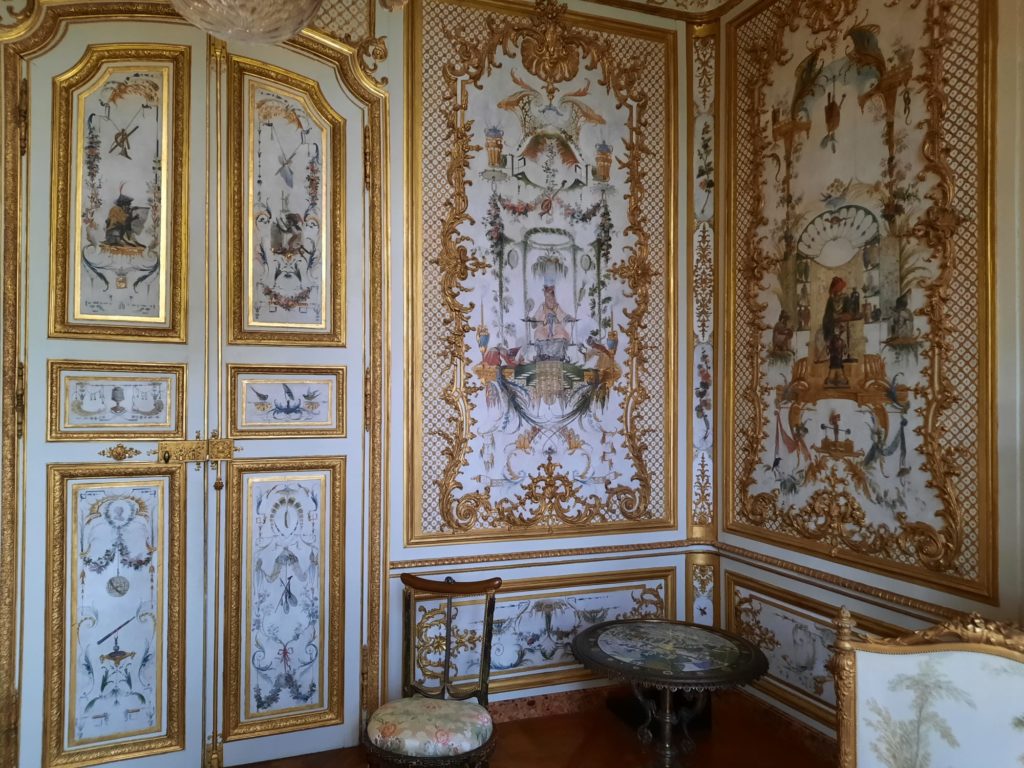

The Château Itself
So as I said above, most of the château you see today isn’t actually the original. The Château de Chantilly started life around the 11th Century. Like a lot of castles it changed over the centuries. In the case of Chantilly, three notable and intertwined families are particularly connected with its history: the Bourbon, Montmorency and Condé families (remember the Musée Condé?). The ‘classic’ version of the Château de Chantilly took shape in the 16th Century in the hands of Anne de Montmorency (note: a man, not a woman) with Jean Bullant as architect. A lot of remodelling was done by Louis-Henri, duc de Bourbon and his architect Jean Aubert, around 1719. And while the Grand Château was razed to its foundations after the French Revolution, the Petit Château survived. Thus Henri d’Orléans had something to work with for his 19th Century version.
Visiting the château today, this blend of old and new(ish) is interesting. Perhaps it’s the years spent in England, but the rebuilt sections gave me quite an Arts & Crafts vibe. And Gothic was of course back in vogue at the time. What I am calling the ‘château proper’ here, ie. not the Musée Condé, is basically the Grands Appartements des princes de Condé (great apartments of the Princes of Condé). The public rooms and audience chambers, in other words. There are private apartments one floor down, but that requires a guided tour which we didn’t do on this occasion.
In terms of what there is to see, it’s reasonably standard palace stuff. There are vestibules and antichambers. There are formal bedrooms. There’s a library (Cabinet des livres) as the Duke was a notable collector of books and manuscripts. There’s a ‘Gallery of Battles’ with paintings of notable victories won by one of the former owners. Perhaps most interesting, and recently restored, is the Grande Singerie. This is a little drawing room depicting monkeys in various human activities. Once very much en vogue but now a rare survivor. Oh, and in the chapel there is an urn containing the hearts of the Princes de Condé – a little unusual but with quite a grand monument.
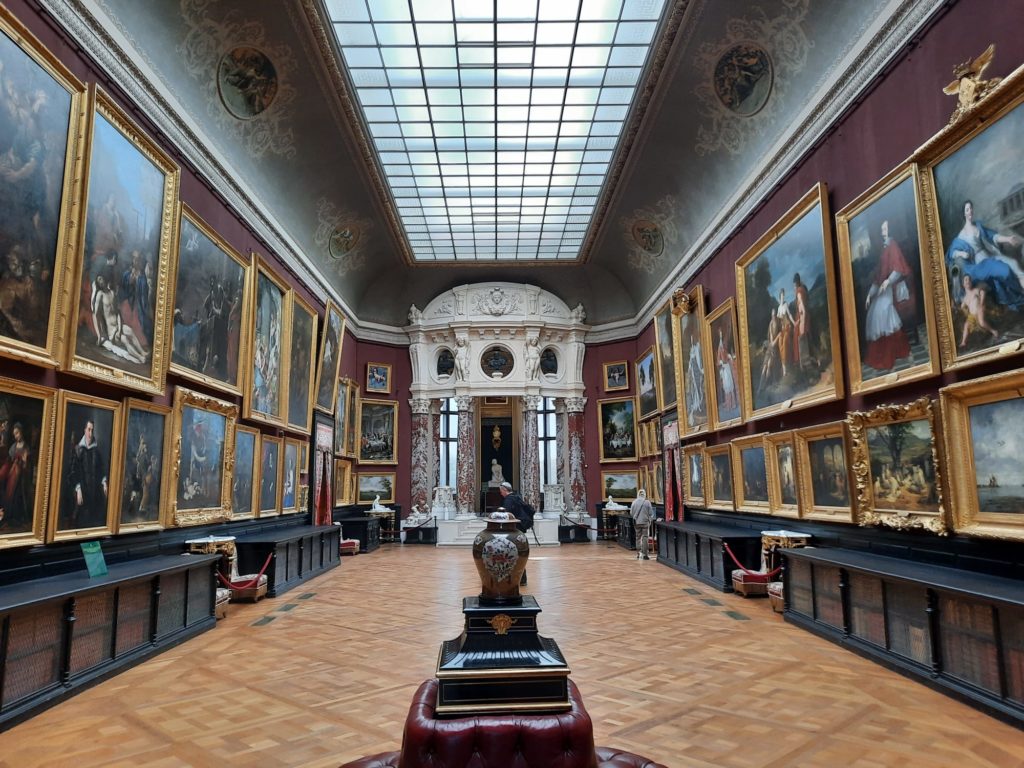
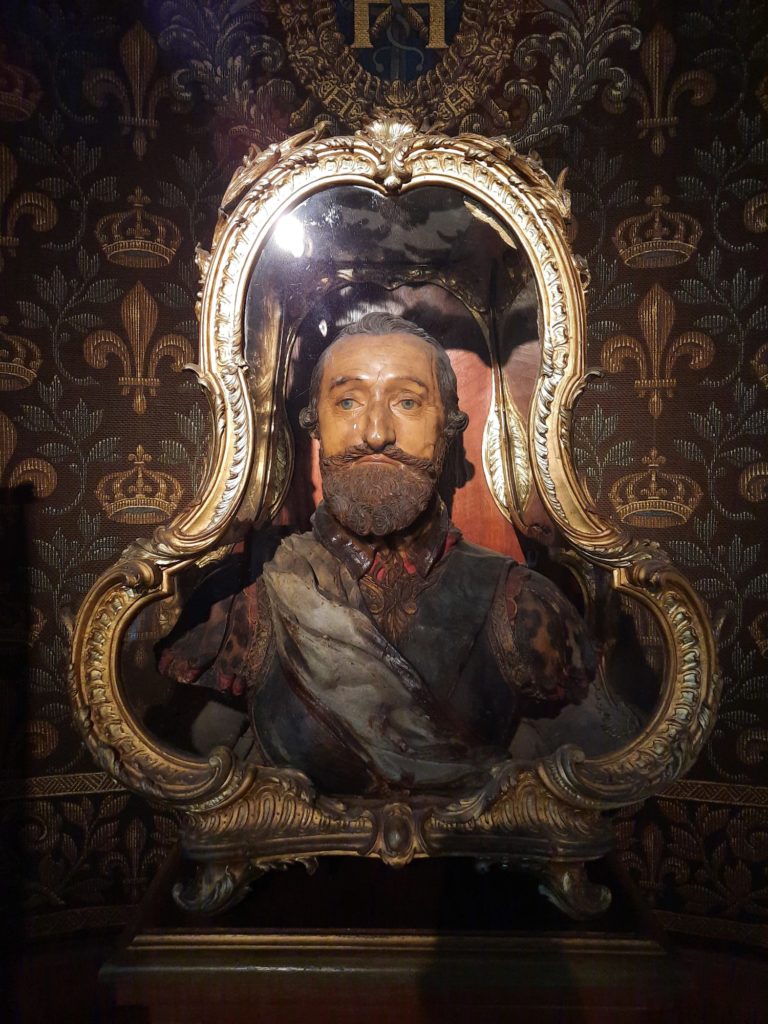

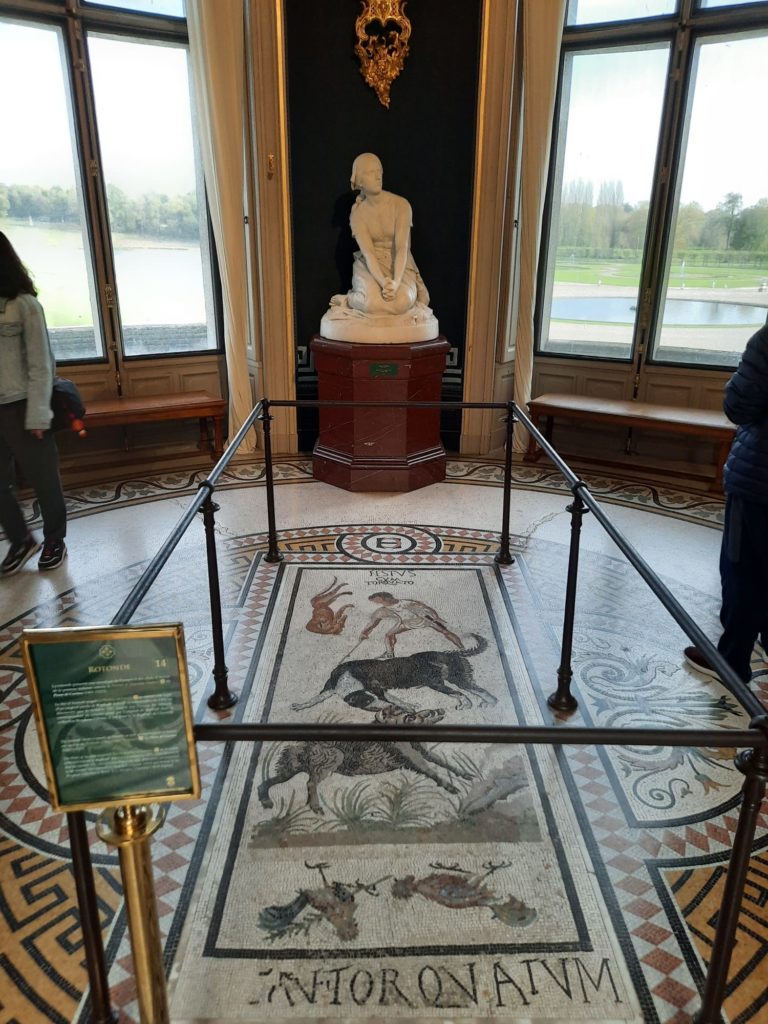


Le Musée Condé
So as previously mentioned, Henri d’Orléans was a serious collector. He was a notable collector of antique books and manuscripts with an important library even while he was at Twickenham. One important object on the books side of things which I would love to see but is normally only available in facsimile copy is the Très Riches Heures du Duc de Berry. His art collection is similarly impressive. Both were made possible by a large fortune, inherited at the age of eight along with the title of Duc d’Aumale.
On his death (he had no heirs), the Duke left Chantilly and his collections to the Intitut de France. There were conditions, however: the collection had to remain unchanged, and there were to be no loans. A good incentive for people to make the trip from Paris, I guess! Today these conditions make for a rather charming museum. There are a couple of larger galleries and some small rooms, all hung deep with paintings in what is now an old-fashioned style. There are works by Raphael, Fran Angelico, Pietro di Cosimo, Van Dyck, Poussin, Watteau and many more. Some of the groupings are relatively thematic, such as a room of portraits of nobles from the time of the Clouets, while others are more blended. It’s really a very nice collection, supplemented by furniture, objets d’art, the odd sculpture and even a mosaic from Pompeii.
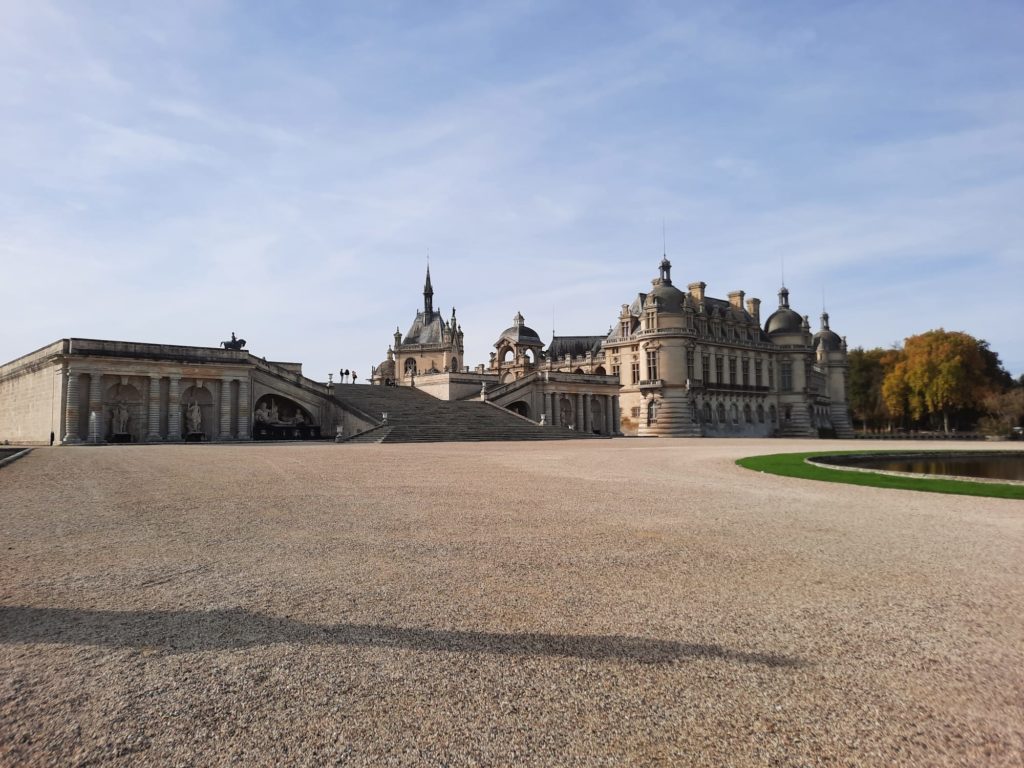


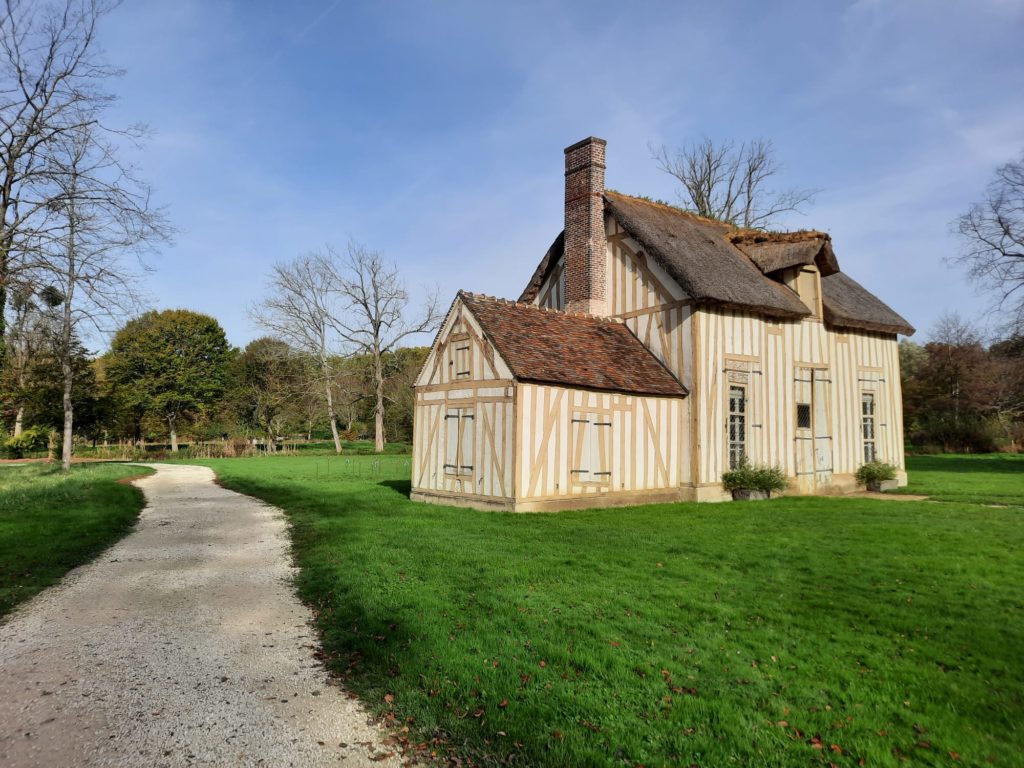
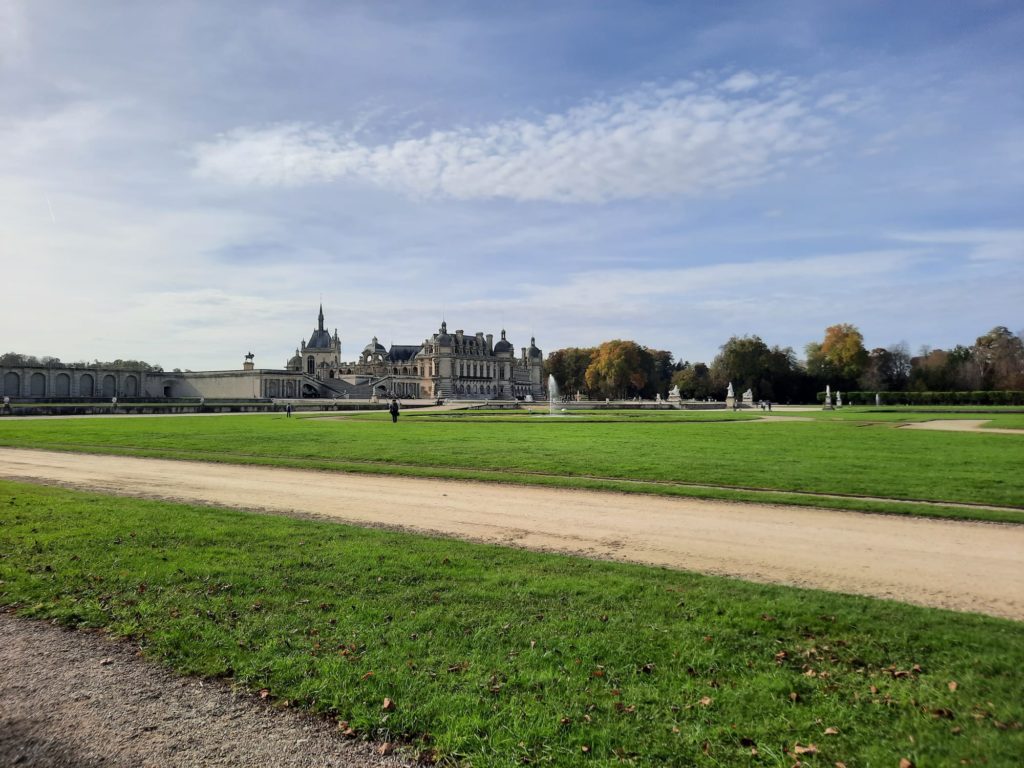

The Grounds
Despite having set aside a day for the Château de Chantilly, in the end we didn’t have enough time to see everything. This impacted how much of the grounds we could see, in particular. And was largely due to the inconvenient train times and the fact that we had dinner plans. It was a lovely and unseasonably warm autumn day otherwise, so it would have been nice to spend more time enjoying the landscaped gardens.
Like a lot of castles and palaces, the grounds at Chantilly are vast, with different areas to see. There is a formal garden with water features, an Anglo-Chinese garden (just looked like a wooded area to me), even a kangaroo enclosure which we didn’t get to see. What we went for, partly because it was lunchtime once we were done in the château, was the ‘Hameau’, or hamlet. You know how Marie-Antoinette had a hamlet at Versailles where she played at being a peasant? Well she drew her inspiration from Chantilly. Not far from the château, there are a handful of half-timbered buildings in a picturesque setting. Today it houses a restaurant. We benefited from the warm weather and sat outdoors with cider and a traditional French spread. The meal ended, of course, with crème Chantilly, the French version of whipped cream and a sweet treat invented right here.
After a leisurely meal we didn’t have much time to see more of the grounds, so continued on to our next stop. There are a lot of nice options though, by the looks of it. In the morning we saw a convoy of horse-drawn omnibuses taking people off somewhere (presumably a tour of the grounds?). And there is a little tourist train as well. Plus I would have liked to see those kangaroos.
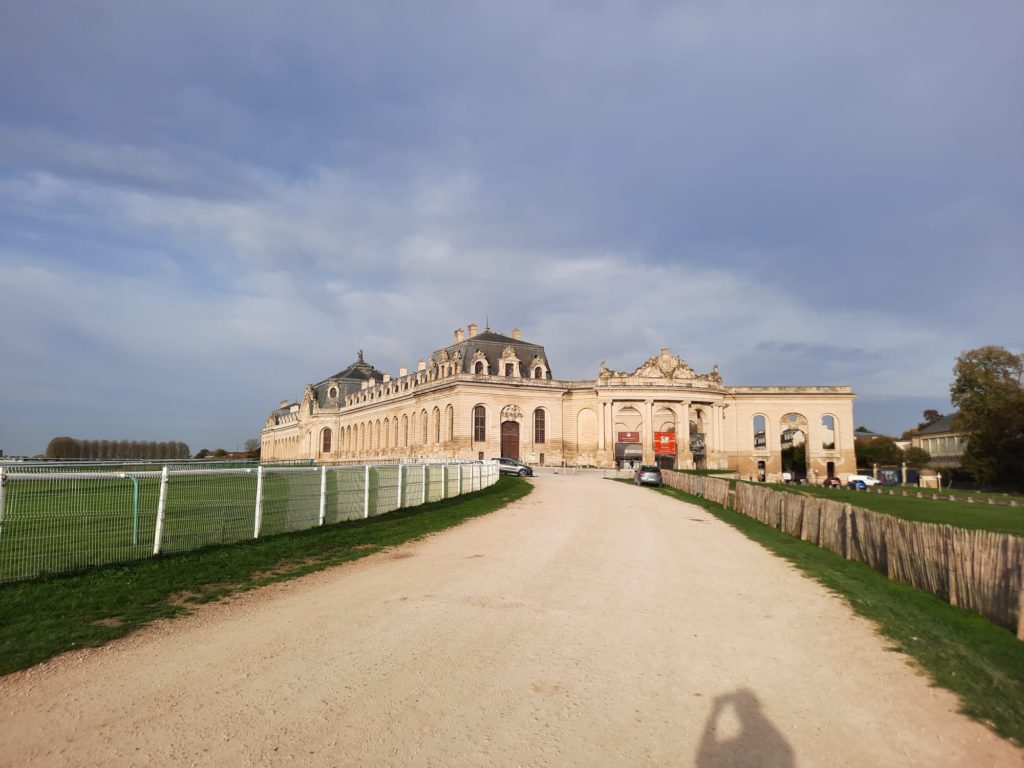


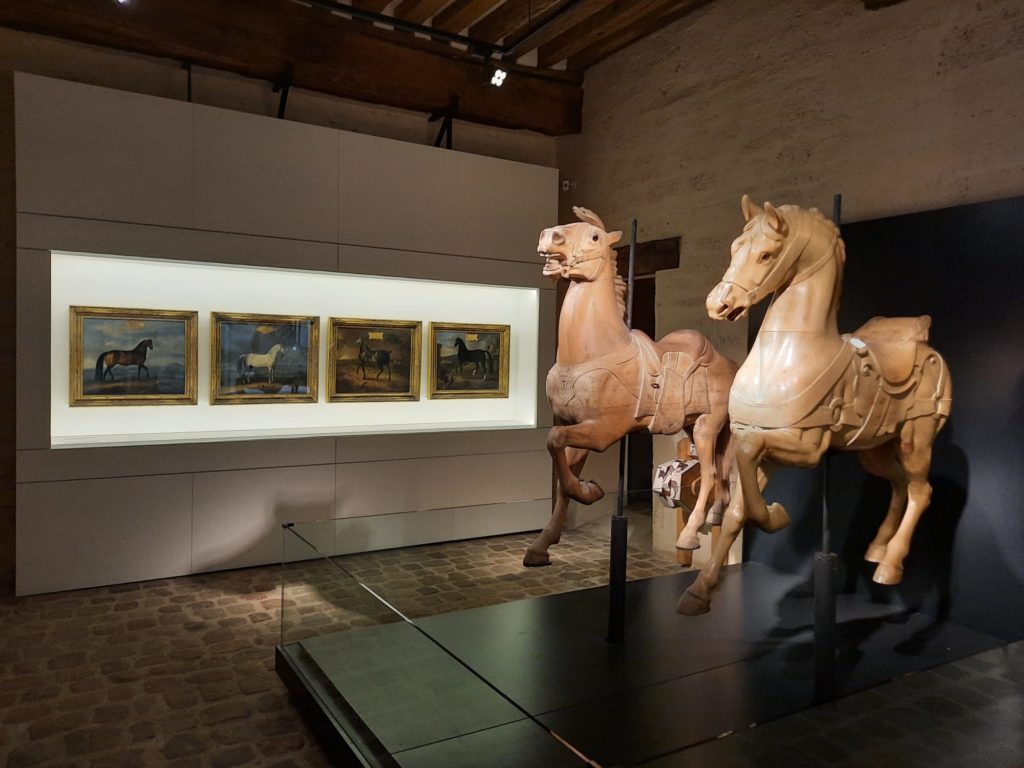
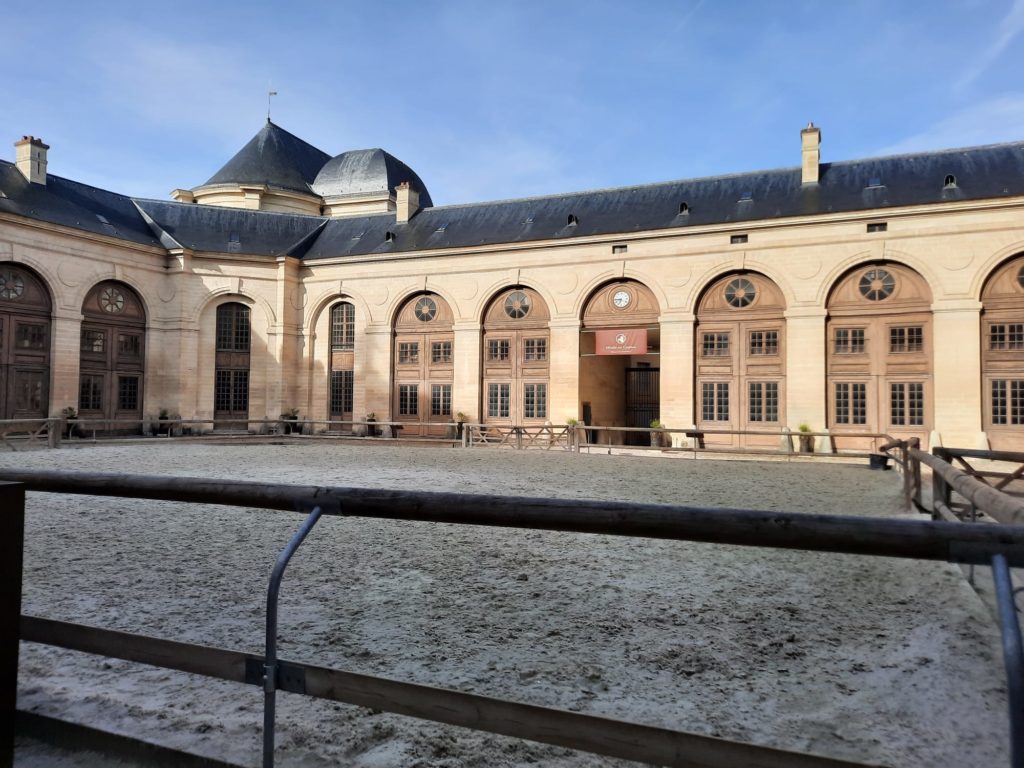

Les Grandes Écuries / The Great Stables
Walking to the Château de Chantilly in the morning from the station, we spotted the stables of Chantilly from a distance and thought they were the castle itself. They are certainly grand. And there is a legend as to why. Apparently the Prince de Condé, Louis-Henri de Bourbon, was convinced that he would be reincarnated as a horse. With great wealth and opportunity at one’s disposal, why not, in that case, ensure the best possible horse life for your future self? So he had his architect, Jean Aubert, build these Great Stables between 1719 and 1740.
Whether or not this is true (I hope so because I like it), these are the fanciest stables I’ve ever seen. There is today a ‘Living Museum of the Horse’ at Chantilly, which we had enough time to pop our heads into before we had to go and get our train. You enter through some actual stables and say hi to some horses, pass through some museum rooms with horsey objects laid out around a central dressage area, and then have the opportunity if you time it right to see a show in the main arena.
I was blown away by the main arena. It’s massive. The height of it is incredible, and there is seating going far back on two sides. I can’t quite imagine why it was built in the first place. There is space for horse racing outside (as featured in A View to a Kill) but what were horses doing in the arena back in the 18th Century? In 2022 we were able to catch a demonstration of different natural and learned gaits, and the start of a trick riding demonstration before we had to get back to the station. It was a nice way to end the day and deserved more time in its own right.
Salterton Arts Review’s rating: 4/5
If you see this after your page is loaded completely, leafletJS files are missing.

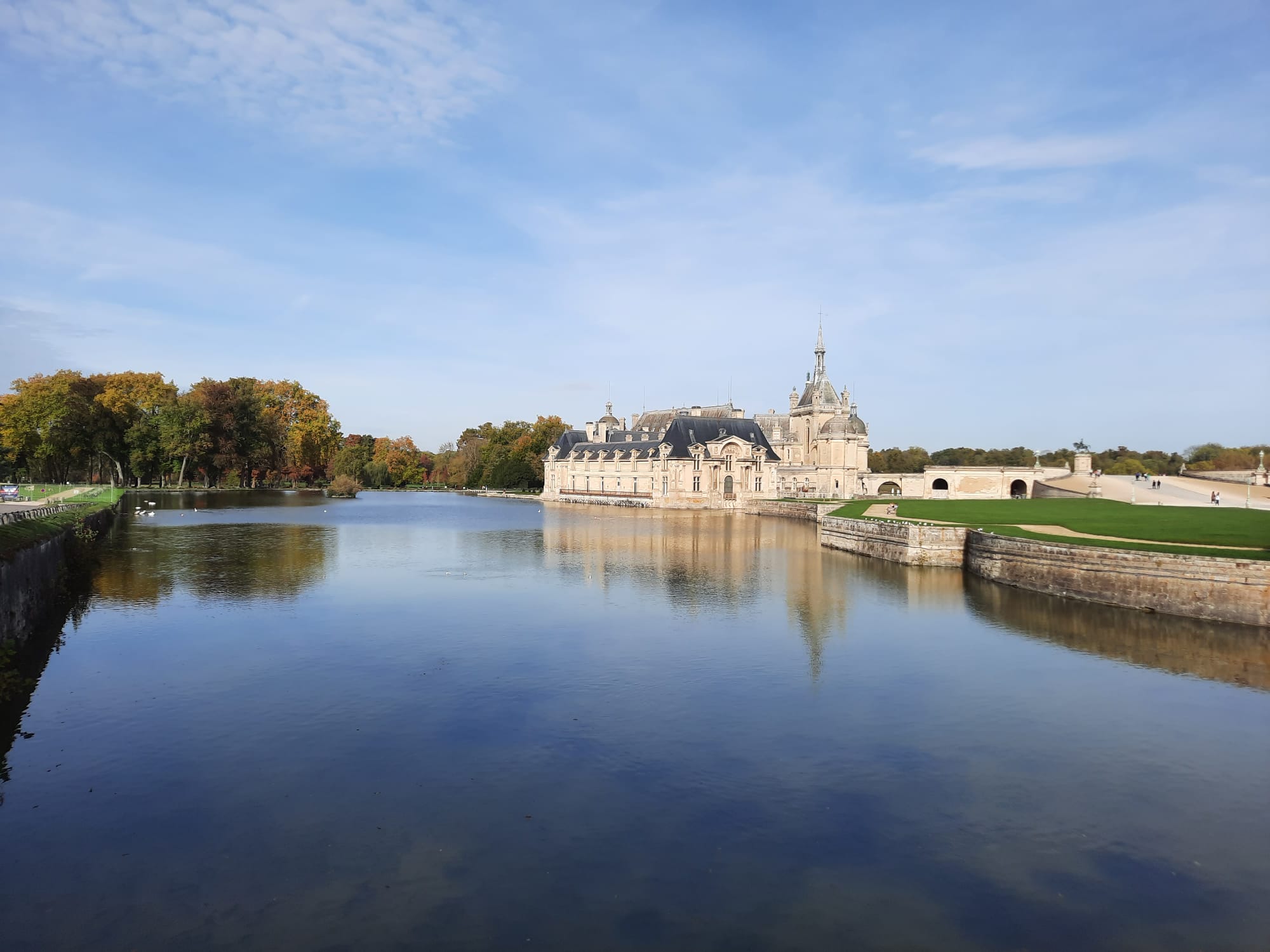
One thought on “Le Château de Chantilly”